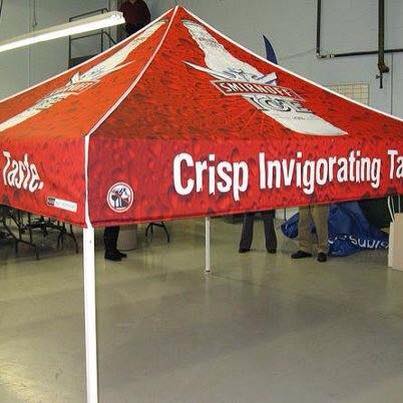

Vital Wrist Ball Reviews: Compact Power Trainer
As a carpenter, I’ve spent decades relying on the strength of my hands, wrists, and forearms to push, lift, hammer, and carve wood into something that lasts. If you work with your hands for a living like me, you know the demand it puts on your joints and muscles—it’s nonstop stress day after day. Injuries flare up quick, wrist pain slows you down, and weak grip strength makes simple tasks harder than they ought to be. Over the years, I’ve tried plenty of tools and exercises to keep my hands and arms in shape, but most of them were either bulky, boring, or just plain impractical for a busy workday. That’s why when I came across the Vital Wrist Ball, it really grabbed my attention. This compact, palm-sized device has been a game-changer for my grip, my wrist stability, and even for easing some of the nagging aches I’ve had from swinging hammers and using power tools every day.
What is Vital Wrist Ball?
Put simply, the Vital Wrist Ball is a palm-sized strength-training device that uses gyroscopic resistance. Unlike traditional weights where you lift against gravity, this little gadget creates its own resistance through motion. Inside the Vital Wrist Ball is a rotor that spins faster and faster as you rotate your wrist. The faster the rotor spins, the more resistance you feel. What that means for guys like us who work with their hands is that you can strengthen your grip, your forearms, and your wrist stability—all without lugging around weights or needing a ton of space.
When I first got mine, I was skeptical. How much of a workout could something that fits in a pocket really provide? But after just a few minutes of spinning it, I was sweating. My forearm muscles were burning in a way I usually only feel after a long day of planing wood or driving screws overhead. The resistance builds gradually, so you can use it for warm-ups, endurance training, or even challenging strength-building sessions. It’s surprisingly versatile.

Why it Matters for Carpenters
Carpentry is tough on the body. Hours of hammering, drilling, cutting, and gripping wood tighten up the joints and cause repetitive stress injuries if you don’t stay ahead of it. Over the years, I’ve seen good carpenters sidelined by carpal tunnel, tendonitis, or just plain wrist weakness. What impressed me most about the Vital Wrist Ball is how directly it targets the areas we carpenters rely on every single day:
- Grip strength: Whether it’s holding a nail gun steady, tightening clamps, or carrying lumber, your grip is everything. The Vital Wrist Ball works every finger, tendon, and muscle that controls how strong your grasp is.
- Wrist stability: A weak wrist means poor control with chisels, saws, or drills. The gyroscopic resistance of this ball forces your wrist to stabilize in multiple directions at once, which builds real-world strength you’ll feel on the job.
- Forearm endurance: By the end of an eight-hour workday, most carpenters feel that dull fire in their forearms. This tool helps build endurance so that handling heavy tools all day isn’t such a drain.
- Rehabilitation: For older guys or anyone already dealing with wrist pain from years of work, the gradual resistance makes it excellent for rehab. It’s a way to rebuild strength without going too hard too fast.
I’ve tried using hand grippers before, but they always felt a little one-dimensional and repetitive. The Vital Wrist Ball engages muscles in a circular, multi-directional way that feels much more natural—like the kind of movements you actually make on a job site.
My Experience Using Vital Wrist Ball
I decided to bring the Vital Wrist Ball into my routine on work breaks. At first, I used it for about 3–5 minutes before starting my shift, mainly as a warm-up. It loosened up my wrists and hands before grabbing the first piece of lumber. After a week or so, I added some sessions at lunch and after work for about 5 to 10 minutes.
The results surprised me. Within two weeks, I noticed that my wrist didn’t ache as much at night, which had been a steady problem for years. After a month, I felt like my grip when swinging a hammer or handling plywood sheets was stronger and more reliable. Even holding a heavy drill overhead felt easier because my forearm endurance had improved noticeably.
When I showed it to a couple of the guys on my crew, at first they laughed at how small it looked. But when they tried it, you could see immediately how hard their forearms were working. It doesn’t take long before your muscles light up, which makes this little tool surprisingly addictive.
Benefits of Vital Wrist Ball
Here’s what I’ve personally experienced and noticed as the biggest benefits:
- Compact and portable—you can throw it in your toolbox or pocket and use it anywhere.
- Adjustable resistance based on how fast you spin, which makes it ideal for beginners, heavy users, or even rehab.
- Strengthens grip, wrist, and forearm together rather than in isolation.
- Helps prevent and recover from repetitive strain injuries.
- Doesn’t take up space in a crowded workshop or require a trip to the gym.
- Makes training feel more engaging than just squeezing a gripper or lifting a dumbbell.
One overlooked benefit is that it’s actually kind of fun. There’s a rhythm to getting the ball spinning smoothly and keeping it going. It becomes a challenge that keeps you more engaged compared to other dull exercise tools.
Things to Keep in Mind
It’s worth mentioning that there is a little bit of a learning curve when you first start using a wrist ball. It takes a few tries before you get the motion right to really get the rotor spinning. But once you figure it out, it feels natural.
Also, while it does work great for building strength, it’s not meant to totally replace traditional exercises. If you’re into weightlifting already, this should be viewed as an addition rather than a full replacement. For us carpenters, though, it’s tailor-made—a small investment for big payoff in hand and arm durability.
Who Can Benefit Most from It
While I use it primarily for carpentry, there are plenty of other trades and hobbies where this tool makes sense:
- Mechanics who constantly twist wrenches.
- Musicians like guitarists or drummers who rely on hand dexterity.
- Athletes in rock climbing, tennis, or golf who need wrist and grip strength.
- Office workers dealing with stiff wrists from typing all day.
- Anyone recovering from wrist or forearm injuries.
But I’d argue that carpenters and tradesmen get some of the most direct, everyday benefits from it because our livelihood depends on strong, pain-free hands.
Where to buy Vital Wrist Ball?
If you’ve read this far, you’re probably wondering where you can get your hands on one. While you might see knock-offs sold here and there, I’d strongly recommend buying from the official Vital Wrist Ball retail store. That’s where you’ll know you’re getting the genuine product with the full build quality the Vital Wrist Ball is known for.
For me, this tool has been worth every penny. It’s compact, reliable, and makes a noticeable difference in how my wrists and forearms perform day in and day out. As a carpenter, the value is clear: a small tool that prevents injury, boosts endurance, and extends the strength of my most important assets—my hands. Whether you’re swinging a hammer, running a power saw, or lifting sheets of plywood, the Vital Wrist Ball makes the work easier on your body and lets you keep going strong.
So yes, it’s absolutely worth the buy. Head over to the official retail store, grab one, and give it a try. I can’t imagine going back to work without mine now.












